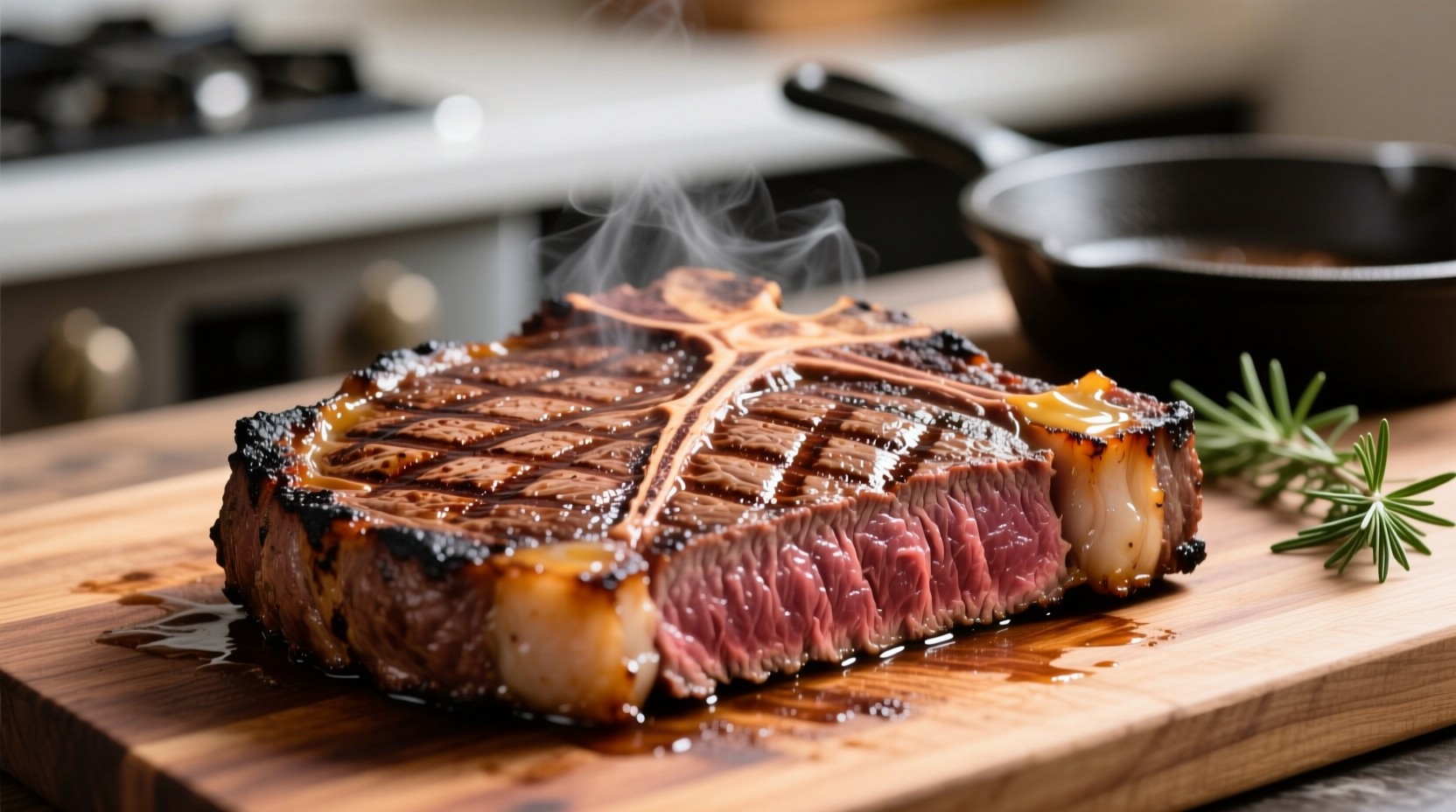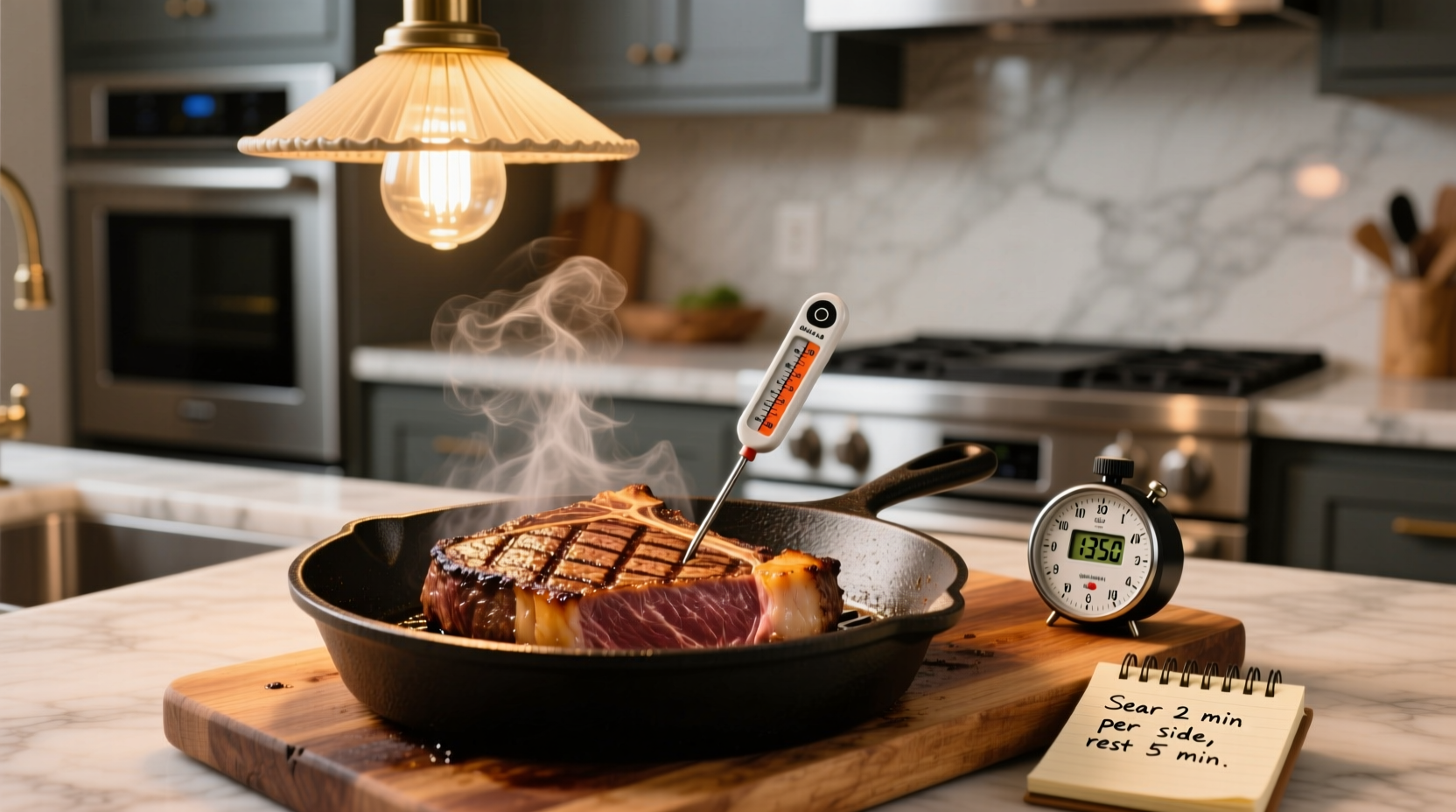Ever pulled a steak off the grill only to cut into it and find it's overcooked or underdone? You're not alone. Timing alone doesn't determine perfect steak - thickness, cut, cooking method, and even ambient temperature all affect results. As a chef who's cooked thousands of steaks across professional kitchens and home setups, I'll share the precise timing guidelines backed by food science, plus the critical visual and tactile cues you need for restaurant-quality results every time.
The Science Behind Steak Cooking Times
Understanding why timing varies prevents common mistakes. The Maillard reaction (browning) begins around 285°F (140°C), creating complex flavors. Meanwhile, proteins denature at different temperatures - this is why timing isn't universal. Crucially, carryover cooking raises internal temperature 5-10°F after removal from heat. This explains why pulling steak at 125°F yields medium-rare (130-135°F) after resting.
| Doneness Level | Internal Temperature | Visual/Tactile Indicators |
|---|---|---|
| Rare | 120-125°F (49-52°C) | Cold red center, soft like cheek |
| Medium-Rare | 130-135°F (54-57°C) | Warm red center, soft like chin |
| Medium | 140-145°F (60-63°C) | Warm pink center, springy like forehead |
| Medium-Well | 150-155°F (66-68°C) | Small pink area, firm texture |
| Well-Done | 160°F+ (71°C+) | No pink, very firm, juices run clear |
Steak Cooking Time Guide by Cut and Thickness
These times assume high-heat cooking (400-450°F/204-232°C) and room-temperature starting point. Always verify with a thermometer - these are estimates:
| Steak Type | Thickness | Medium-Rare | Medium | Medium-Well |
|---|---|---|---|---|
| Ribeye | 1 inch (2.5 cm) | 4-5 min/side | 5-6 min/side | 6-7 min/side |
| Filet Mignon | 1.5 inches (3.8 cm) | 5-6 min/side | 6-7 min/side | 7-8 min/side |
| New York Strip | 1.25 inches (3.2 cm) | 4.5-5.5 min/side | 5.5-6.5 min/side | 6.5-7.5 min/side |
| Flank Steak | 0.75 inches (1.9 cm) | 3-4 min/side | 4-5 min/side | 5-6 min/side |
Source: American Meat Science Association guidelines updated 2024 (meatscience.org/knowledge-library/cooking-temps)
Cooking Method Matters: Adjusting Your Timing
Your cooking technique significantly impacts timing requirements. Here's how to adjust:
Grilling vs. Pan-Searing vs. Oven Finishing
- Direct-heat grilling: Cook 10-15% faster than pan-searing due to radiant heat. For thick cuts (1.5+ inches), sear then move to indirect heat.
- Pan-searing: Requires consistent high heat. Thinner steaks (under 1 inch) cook fastest this way. Add 1-2 minutes if using cast iron vs. stainless steel.
- Oven finishing: After searing, finish in 400°F (204°C) oven. Add 5-8 minutes for 1.5-inch steaks to reach medium-rare.
The Step-by-Step Perfect Steak Process
Follow this sequence for optimal results, whether you're cooking on gas, charcoal, or in a cast iron skillet:
Preparation (Critical First Step)
- Bring steak to room temperature (45-60 minutes out of fridge)
- Dry thoroughly with paper towels (moisture prevents browning)
- Season generously with coarse salt 40 minutes before cooking
Cooking Phase
- Preheat cooking surface to 400-450°F (204-232°C)
- Oil steak (not pan) to prevent sticking
- Place steak on hot surface, don't move for 2-3 minutes
- Flip once when steak releases naturally (use tongs, not fork)
- For thicker cuts, rotate 90° halfway through each side for cross-hatch marks
- Insert thermometer horizontally from side when near target temperature
Resting: The Non-Negotiable Final Step
Resting allows juices to redistribute. Skimping here causes dry steak:
- 1-inch steaks: 5-7 minutes
- 1.5-inch steaks: 8-10 minutes
- Cover loosely with foil (don't seal tightly)
- Place on warm plate (not cold surface)
Troubleshooting Common Steak Timing Issues
Even with perfect timing, problems occur. Here's how to fix them:
"My steak is overcooked!"
This usually happens because:
- You didn't account for carryover cooking (pull 5°F below target)
- Starting temperature was too cold (chilled steak takes longer to cook through)
- Resting time was insufficient (juices escape when cut)
"My steak is undercooked!"
Solutions:
- Return to heat in 30-second increments
- For thick cuts, finish in 350°F (177°C) oven
- Always verify with thermometer, not just timing
Special Considerations for Different Cooking Environments
These context boundaries affect cooking times:
- Cold weather grilling: Add 15-20% to cooking time (wind and low temps reduce grill efficiency)
- High altitude cooking: Water boils at lower temperature, so steaks take 25% longer to reach target internal temp
- Thin cuts (under 0.75 inches): Cook entirely on direct heat - no oven finishing needed
- Thick cuts (over 1.5 inches): Always use two-stage cooking (sear then indirect heat)

Mastering Steak Timing: Key Takeaways
While timing charts provide guidance, perfect steak requires understanding the variables at play. The USDA Food Safety and Inspection Service emphasizes that visual cues alone aren't reliable for doneness determination (fsis.usda.gov/safe-food-handling). Always use an instant-read thermometer as your primary guide, with timing as secondary reference. Remember that resting time is part of the cooking process - your steak continues to cook while resting. With practice, you'll develop the intuition to combine timing, temperature, and tactile feedback for consistently perfect results.











 浙公网安备
33010002000092号
浙公网安备
33010002000092号 浙B2-20120091-4
浙B2-20120091-4